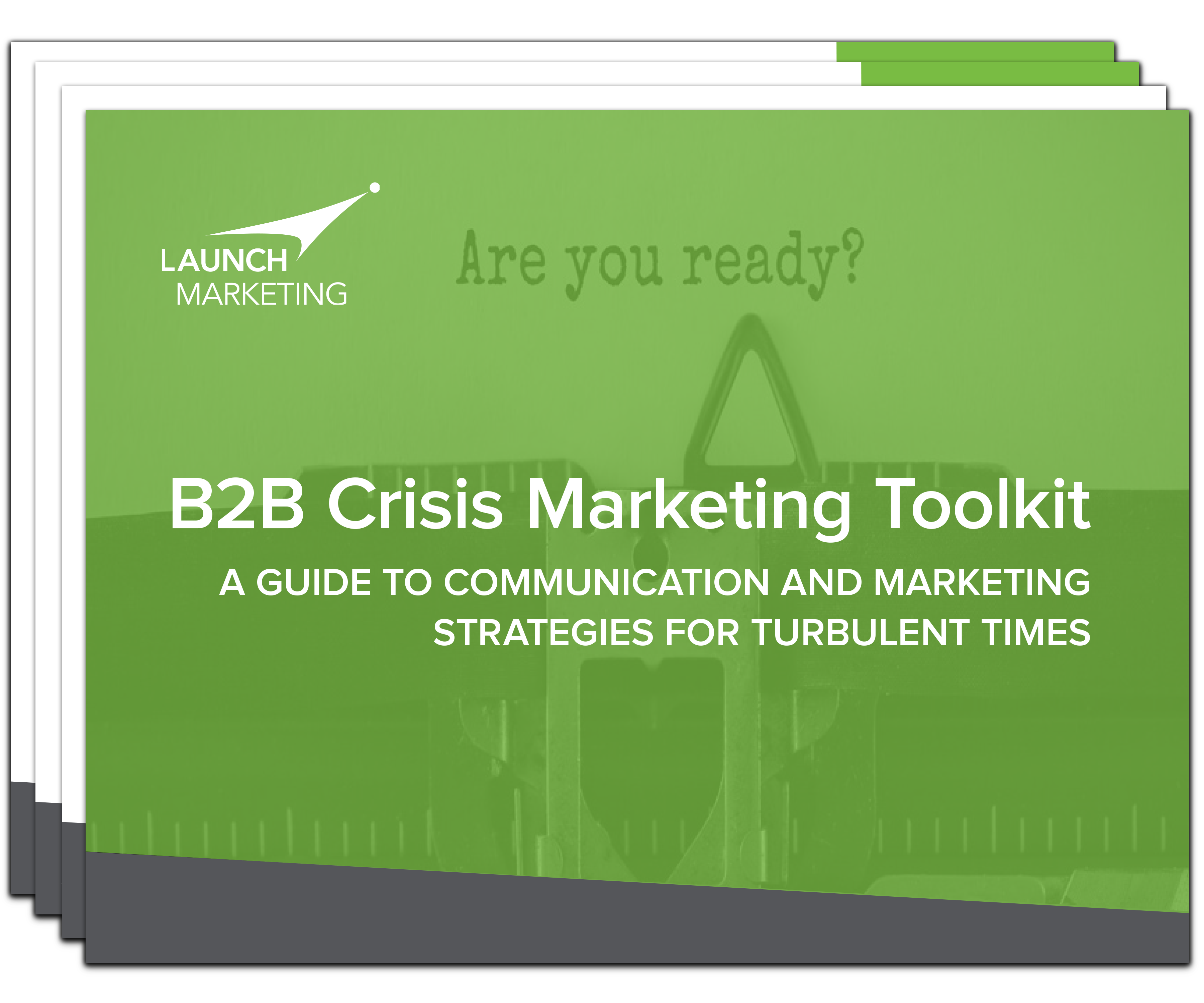
While tools and skills can simplify planning, there is no scientific way to know when unexpected shifts will happen in the market. The novel coronavirus pandemic (COVID-19) and the social distancing that has come with exemplifies that. Even if your 2020 planning accounted for contingencies, the odds are that you did not plan for such a colossal and inimitable disruption. Most of us are currently living day-to-day and businesses are having to do the same. Due to the kind of interruption COVID-19 has caused, certain organizations are not failing but thriving, including grocery stores, delivery services and big box stores that focus on everyday necessities. Even thriving companies had substantial shifts to their demand forecasts and supply chains. It is also a near guarantee their marketing plans had to be thrown out the window to shift messages to focus on compassion and meeting new concerns and demands.
How organizations, including B2B, message their content right now is crucial. However, completely starting your marketing plan over and shifting gears can be overwhelming. Marketing Adjustments for Turbulent Times is a good resource to get you and your team started.
Adding Agility to Planning
Agile is a term that took American businesses by storm in the last decade. It originated in the world of project management as a methodology that, in laymen terms, means to plan projects in shorter durations and be able to handle changes quickly and more efficiently, as well as rely on team dynamics, not just independent workers. The term caught on in many areas of business due to its flexibility and collaboration in a fast-moving marketplace. The days of newspaper ads and radio commercials that were placed months in advance have gone into hyper-speed as digital platforms became the norm.
With the entry of digital into our everyday lives, marketing began to move much faster. Results suddenly could be seen and analyzed in real-time. Teams became able to adjust plans and messages in response to how their campaigns perform. Digital also has enabled us to reach more people in more ways. The social distancing we are participating in has led us to work remotely, and we must now lean on digital more than ever. In our daily lives, our workdays and how we plan for the future, digital has become a staple. If you are unsure of ways to use digital platforms to address the crisis, explore ways to think outside the digital box.
Bring Conventional Planning into Unprecedented Times
Adopting and taking full advantage of an agility mindset is crucial. For the foreseeable future, you will continue to need to be mindful of what is happening each day and adjust messaging and plans as needed. However, that does not mean you cannot think about your future marketing plans and actually begin to plot out your strategies.
If you are having trouble organizing how to go about changing your plans and messaging, review our free B2B Crisis Marketing Kit. Key things to consider are: does your B2B product or solution help with the current situation; does it make working remote easier, save businesses money and increase ROI, help healthcare industries; or increase safety, assist organizations that make delivery a focus, and so forth? Many B2B products and services can help make everyday lives easier in the current circumstances and now is the time to make that known.
Leaders should also examine current industry trends. Companies have been reporting a shift from canned food goods to puzzles and family at home entertainment to grooming and personal healthcare items over the past few weeks. Nielsen has a deeper in-depth study tracking the effects of COVID on certain markets, which gives a good insight into overall behavior and trends.
As you look past the immediate term, you can begin to plan out your 3-9-month plan. We know that COVID-19, and all the havoc it has reeked, will not magically go away in the next three months, but we do expect that more “regularity” will return to our lives. Below are general considerations for planning your marketing for the rest of 2020 and into 2021. As with any good plan, you may need to shift if more unexpected developments arise.
3-Months Out
Now is the time to consider how some of the following could impact your product or service. In three months, we most likely will see:
- Social distancing restrictions removed
- Some people shifting back to office environments and some remaining remote
- Travel beginning to pick back up slowly
- Businesses continuing to utilize virtual conferencing and other digital platform replacements, e.g., having a webinar instead of an in-person event
- Family and friends will be a common premise in marketing and advertising themes
- SaaS platforms experiencing growth
- New types of businesses emerging out of the needs that arose from this crisis, e.g., products and services that improve digital performance and security
- Physical, mental and spiritual health ideologies will be more mainstream and businesses that promote or use them will be more commonplace
6-Months Out
In six months, we expect to be back to a sort of pre-COVID-19 normal. There will most likely be some trends that will hang-on and should be kept in mind while planning. Think about how future consumer behavior shifts will impact your product or service and apply to how you will need to market. Predictions for trends that will influence post-COVID-19:
- Social distancing will most likely have been over for a few months
- More people will use conferencing in their everyday lives, including continuing to be a popular alternative, if not the norm, in work situations
- Remote working will be more common and companies will be more open to that trend
- Brick and mortar businesses and restaurants will begin to thrive and become steady again
- Delivery business may decline a bit but remain steady as new customers experienced and enjoyed the convenience
- More SaaS-based platforms will be popping up, some with solutions that are new to their industries
- Eco-health related organizations will begin to form, flourish and become a key value for many businesses
- Travel should bounce back and become back to normal around the holidays
The next three to six months will lend valuable data to how your product or service is performing and allow you to set better-defined goals based on those metrics. It is essential that you analyze your data on a regular basis over the next week and months, more than ever before it is vital to your business health.
The New Normal and Beyond
As you begin to look to 2021, you should be able to adjust your marketing focus back to “normal.” Remember to be flexible and adjust as needed to keep up with what is happening globally, from an economic standpoint and a health outlook. If you and your team remain vigilant and agile, your B2B organization should be able to withstand the intense circumstances that are upon us.
Does your organization need help planning for the future in these uncertain times? We are here to help.

There are no comments